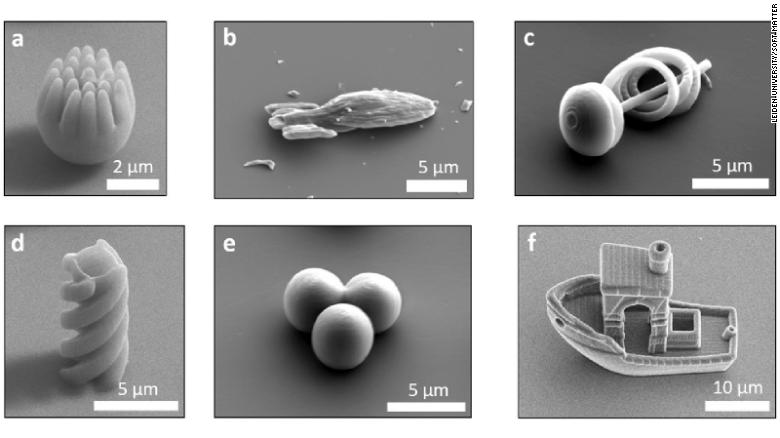Smallest Boat Created by a 3D Printer?
Scientists have actually created the world's tiniest boat, measuring simply 30 micrometers in length, so small it could cruise down a human hair.
Utilizing an electron microscopic lense and a high resolution 3D printer a team from Leiden University imaged and after that built the vessel as part of research study into prospective designs for vehicles that could travel inside the human body, for instance to administer medical treatments.
It is a tiny copy of the "Benchy" boat, a test structure frequently utilized to check the effectiveness of 3D printers.
"We focused a laser inside a bead," Daniela Kraft, a physicist at the Dutch university told CNN. "If we move the laser through the bead, we compose the structure that we want," she explained. "For example, if we move it in a helix, we are composing a helix."
The boat was simply among lots of structures developed by the researchers conducting investigations into microswimmers: little particles that can move through fluids, and be followed by a microscope.
Biological microswimmers are microbes that propel themselves, including germs, algae and sperm.
Artificial, self-propelled microswimmers could have a range of usages, including delivering drugs in the body, Kraft informed CNN.
Researchers conducted the research study, released in the Soft Matter journal, to understand how particular shapes of artificial self-propelled microswimmers impacted motion and traction, and much better comprehend the behavior of bacteria.
Professionals had the ability to create objects measuring just 4 micrometers. One micrometer amounts to 0.001 mm, or about 0.000039 inch.
"We intend to discover what is now a great design principle for producing a little drug delivery lorry-- if you have a little particle that goes to a particular part of the body to provide drugs, then it has to propel itself, and it may need to handle the environment in your body, which is extremely complicated," Kraft told CNN.
"What we are attempting to answer is: what would be a good design? What would be an excellent shape so that it can go around and be effective?" Kraft told CNN that particles produced in a helix shape revealed promising movement.
"When it moves forward, often it needs to rotate, which helps, for instance, to speed it up. If you think of applications, if you wish to have a little device that goes someplace, it might be better to have a helix shape, since it swims much faster," she stated.

